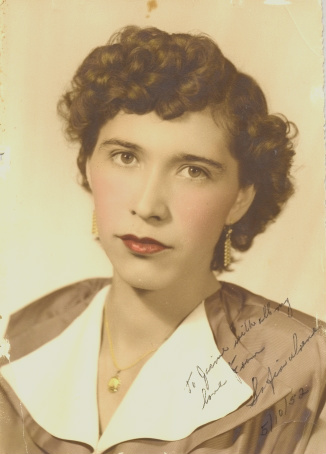TRANSCRIPTION
What are your earliest childhood memories?
Mija, some of my favorite memories where playing with my two older sisters Carmen and Emma we would play tag and hide and go seek at our house in Los Angeles, California.
Sometimes I would play with my friends in the neighborhood and when I had no one I would play with my dolly and I would take her everywhere.
What did your house look like while living in Los Angeles, California?
We lived in a one story house that had only a few rooms we had a big porch that where my sisters and I would play. Our Grandmother and mother planted beautiful plants and flowers along our house.
What did you want to be when you where younger?
I always wanted to become a typist because I always wanted to learn how to use a type writer and that's was one of the many things that a women could have as an occupation.
Did you have any kind of duties as a small child?
Oh no since I was the baby my mother never let me work I would just go and have fun. My older sisters would do all the house hold chores.
Did you enjoy going to school when you where young?
Yes I loved going to school I was a great student I never misbehaved like the other kids. I loved reading and writing while I was at school.
What happen to the students who misbehaved in class?
If they got in trouble the sisters would come with a ruler and hit them on the hand or they would get the paddle and hit them on their bottom.
What kind of grades did you make?
I always made either A's or B's never brought home a bad grade.
I know you enjoyed school, but what event made you know longer go?
My mother decided to take me and my sisters back to Monterrey, Mexico because she was struggling with her job and she knew that she would be able to work as a seamstress in Mexico. However I did attend school in Mexico because it was difficult due to the language barrier.
Did your mother have any kind of vehicle?
No, we didn't have any kind of car the only transportation we had was our feet we would go walking everywhere.
Did you ever learn how to drive?
Yes, whenever I would go out with my friends from the neighborhood we would go very far where we could learn to drive. The guys taught all of us girls I was about in my twenties when I learned how to drive. The taught us how to drive standard.
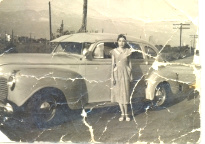
When did you buy your first car?
I bought my first car on April 27, 1950 it was a 1950 standard beige Chevrolet.
What was your fashion style as you where growing up?
It was mostly skirts and dresses during my times. I wore a lot of beautiful clothes that my mother Rosa made my sisters and I. She was the best seamstress
besides her mother that's where she learned from.
How difficult was it when your sisters passed away?
It was very difficult I had to find a job that way I could provide for my nephew and nieces as well as my mother. I had to get a job as a telephone operator and look after my family till they were old enough. It was especially difficult with my nephew Pablo since he had Polio.
How did you meet your husband Jaime?
I met Jaime in Mexico at a relative's house he came in the front door and it was love at first sight. I thought he was the most handsome man I have ever seen in my life. We dated for months then finally decided to marry.
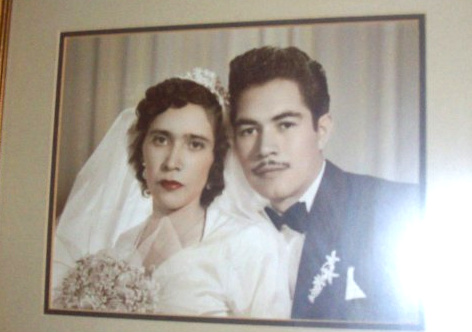
When did you get married?
We got married on October 17, 1952 by the court in Mexico and the next day we got married in a Catholic Church. It was a simple wedding that I will always remember. I loved that man so much.
How many children did you plan on having?
I wanted a few children preferably girls, once I had my last child I still wanted more children.
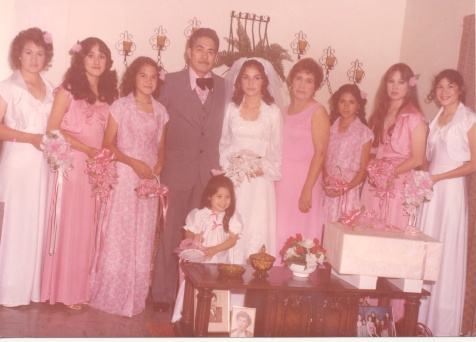
How did you come up with the names for your daughters?
They each were named after a relative or religious belief. We named our first two daughters after the Virgin Mary and Guadalupe. The other girls where named after your grandfather's side of the family and my side.
Where have you traveled to?
I've been to Arizona, Nevada, California, Texas, Georgia, Mexico, Michigan, Illinois and New York.
Can you tell me about this picture?
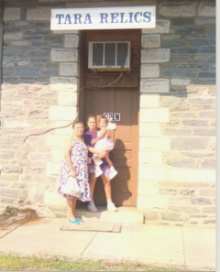
This is you, your mom, and me in Atlanta, Georgia we where shopping. This is when I came to visit you, Zachri, Clara and your dad since your father was stationed in Georgia. I missed all of you so I came to visit for a few weeks.
How difficult was it after Grandpa Jaime died?
It was very hard and it is still hard to think that he's not here today with me and with all my children, grandchildren and great grandchildren. He was a wonderful man he always made sure we were doing okay and provide for us.
What was your favorite job?
I have done so many jobs from being a translator, operator, baby-sitter, raising my nephews and nieces, working at a cookie factory, working as a house-keeper to becoming a mother. My favorite job is being a mother and your grandmother.
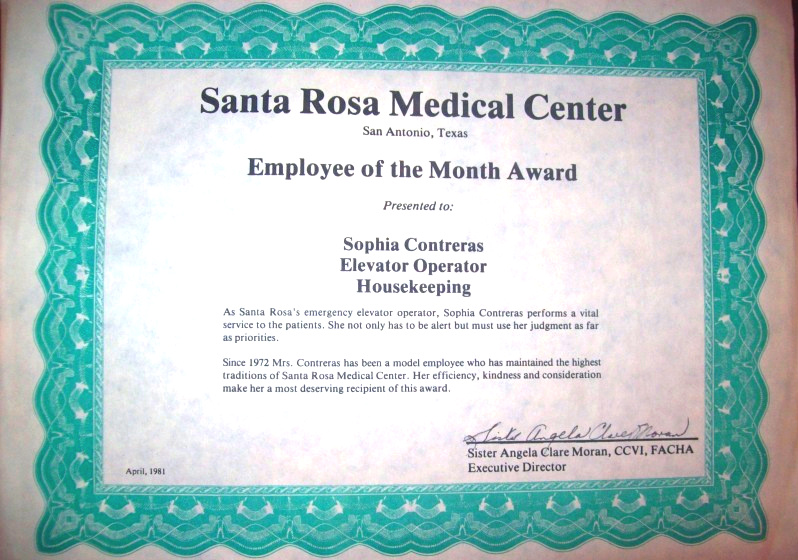
Is there anything else you would like to add to this interview?
No that's pretty much my life story.
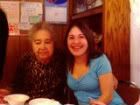
ANALYSIS
While doing the oral history project I got to learn more about my grandmother. There were so many things that she told me, but never as much as she had now. She went through so much obstacles in her life that I couldn't imagine her going through from being raised by a single parent, moving to different places, working at a young age, raising her sisters children, getting married, having seven beautiful girls, and losing her other half my Grandfather Jaime. Some important points that were made in this interview was learning about how women were treated over fifty years ago and how they have gone through so much today women can have different types of occupations rather than just a few that they were allowed to have. I always thought that my grandmother was born and raised in Mexico and came over here to the States with my Grandfather to have a better life when the truth was she was born and raised here in the States and then left to Mexico with her mother to better themselves. They had more of a difficult living here rather than the opposite way where most people left Mexico to come to the States for jobs. I also learned about my Great Grandfather I thought he died from old age instead he was killed by the Mexican Military. While doing this project I could see my grandmother expressions she was so happy looking back at old pictures and when thinking about difficulties she was very sad and didn't want to talk about it however she told me. The stories taught me about what has made my grandmother strong and what has made all my aunts and mother strong they went through difficult times as well, but she made sure everyone was feed, dressed, healthy, and getting an education. I learned a lot about the past through her stories and what I can do to improve my future. Overall, I believe this is a great way of learning about our past from all these amazing stories that our relatives, friends, co-workers or whoever we interview gives us a new perspective about life.
TIME LINE
- Sophia father Pablo Campos was killed four months before she was born.
- Sophia Irene Contreras was born on September 18, 1923 to Rosa Campos in Yuma, Arizona.
- Only went up to the fourth grade then started her first job in 1933 as a translator.
- Bought her first car in 1950 a standard beige Chevy.
- Raised her nieces and nephews after her siblings died in 1950.
- Married Jaime Contreras on October 17, 1952 in Monterey, Mexico.
- August 6, 1953 gave birth to her first daughter Maria De Jesus Campos.
- Moved to Texas in 1954. Lived in both San Antonio and Uvalde, Texas.
- June 17, 1958 had her fourth daughter Clara Estela(My mom).
- July 21, 1964 had her last child (#7) Anna.
- Employee of the month: April 1981 at Santa Rosa Hospital.
- Death of her husband died on April 21, 1985 of a heart attack.
- Was diagnosed with diabetes in 2006.
- Interviewed by Hilary Ann Ruiz on September 20, 2008.
- Just turned eighty five years old on September 23,2008.
ANNOTATED BIBLIOGRAPHY
- Yuma, Arizona
is a website showing the types of jobs, site seeing, houses, and other historical things that are located in Yuma, Arizona.
© 1997-2007 City of Yuma. All rights reserved.
- Telephone Operators it is a website showing the wages that telephone operators have made from the past and have gone up through the years. U.S. Bureau of Labor Statistics Division of Occupational Employment Statistics Suite 2135, 2 Massachusetts Avenue, NE Washington, DC 20212-0001
- Santa Rosa Hospital . This website shows the different types of occupations that work in the hospital as well as how long this hospital has existed.
©2008 CHRISTUS Santa Rosa Health Care
- Polio. Polio was an extremely contagious disease that killed half of the Western hemisphere that occurred during the 1900s. A man named Jonas Salk was the person who created the vaccination in 1955. It also talks about the different signs and symptoms to see if you had polio and how you can prevent from getting this horrible disease.
©1995-2008 The Nemours Foundation. All rights reserved.
- Seamstress My great grandmother was a stress in both Mexico and the United States. This is the way she would be able to provide for her daughters. This is how my Grandmother Sophie had nice clothes to go to school and just to go out in. This link shows more detail about the profession.
©1996-2008 Women in World History Curriculum
- Photographs and/or documents on this website were provided by Sophia Irene Contreras and Hilary Ann Ruiz. The first picture was Sophia she was taking a picture at a photo studio on May 10, 1952. The second picture was of Sophia the day she bought her first car on April 27, 1950. The third picture was of Jaime and Sophia Contreras the day of their wedding. They went to take a picture at a photo studio in Mexico on October 17, 1952. The fourth picture is of my Grandparents, six aunts, my mom and my older cousin Rachel. It was the day of my Tia Lupe's wedding they're taking the picture at my Grandparents house. The fifth picture is of me, my mom, and grandma in Atlanta, Georgia we were shopping sometime during 1994. The next image is of my Grandma Sophie's certificate it's employee of the month at Santa Rosa Hospital on April 1981. The last picture is of me and my Grandmother on my eighteenth birthday at her house on January 20, 2008. These pictures where provided by both Sophia and I they were located in both of our living rooms in a special album.
Return to Oral History Projects
